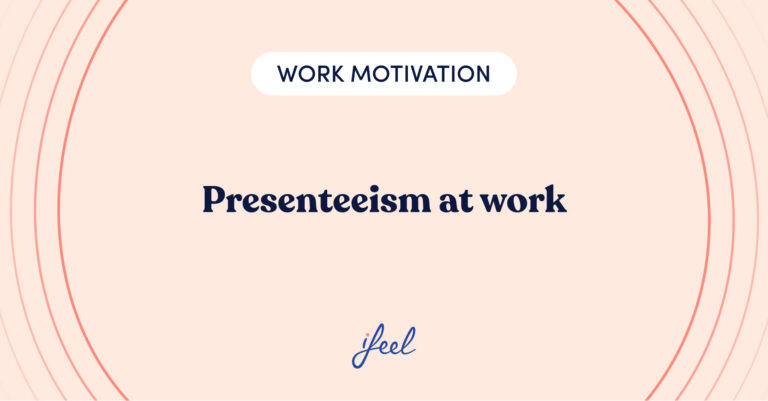Team cohesion in the workplace is one of the main challenges of every manager. Managers and HR managers have a great task when it comes to ensuring that team members not only do not have bad relationships but also get along well enough to put their interpersonal dynamics at the service of the task and generate a favorable working environment that contributes to productivity.
5 ways to build team cohesion in the workplace
Getting a group of people to build a coherent, cooperative group focused on a common goal is not easy and relies on many factors, for example, to manage diversity in the company effectively and to enhance the workforce’s resilience. However, there are at least 5 techniques that can be implemented with relative simplicity and which we are going to explain in this article. Executed in a sustained manner over time, they will favor team cohesion in the workplace.
1. Organize productive meetings
All teams have their way of meeting, but not all can organize productive meetings. That is meetings that allow work to flow smoothly rather than hinder it. To prevent this from happening, the meeting must be seen as a tool at the service of the team, not as an aim in itself.
To achieve team cohesion in the workplace, meetings can be a good starting point and they should also be seen as the simplest example of teamwork: a meeting is not a congregation of people who happen to meet in a room once a week. On the contrary, it is an opportunity to converse, to share the issues at hand, to get to know each other and to share points of view through active listening and the art of assertiveness.

2. Teamwork
Sometimes we complicate things by trying to find miraculous techniques on how to gain team cohesion in the workplace instead of going straight to the simplest solutions: giving people a common goal that stimulates their ability to cooperate and mutually benefit from each other’s talents.
As with meetings, it is clear that group work is not good in itself: it is a means to an end. If that end can be achieved more efficiently individually, there is no point in forcing things. But if the power of the group is going to generate better results, why not benefit from it? After all, with a bit of luck and willingness, interaction can lead to cohesion.
However, it is important to avoid people who don’t understand each other or don’t get along with each other being forced to work together because it can be very tiring. To avoid a slip-up, it is best to take note of our advice below.
3. Involve the work team
Continuing on the topic of starting with the simplest solutions, the best way to confirm data or obtain information is to go to the sources. Ask your employees what they think is the best way to work on a particular issue and what would need to be changed to work better.
You can’t always please everyone, and coordination sometimes means taking the initiative and directly imposing decisions. However, whenever you can, avoid taking for granted what the group needs and ask them: after all, they are the ones who are going to implement it.
This will encourage them to express themselves, share their views, and have a sense of coordination rather than being part of a simple sum of individuals.
4. Influence people
Feeling influential is more than just expressing an opinion on something: it is more about feeling that your opinion has an impact on the way the company runs.
That’s why, in addition to consulting the team on issues that concern them, it’s important that team members feel that their feedback is being taken into account and that they have the ability to make a difference. This helps managers retain talent with the company, but also vitalizes team cohesion in the workplace around common goals and challenges.

5. Encourage positive team-building activities
Team-building activities have multiple objectives: to motivate the team, bring it together, develop its skills, detect areas for improvement and find a way to enhance overall performance through the power of team cohesion.
Bringing people together and getting them to work on something is a one-time event and is easily accomplished. However, bringing teams together, that is, building a team that functions to the best of its ability through channels of cooperation, affection, and trust, is a process. This is why you should understand team-building as a process.
In this sense, rather than proposing events in a disorganized manner, it is advisable to design them strategically to get the most out of them, especially if we want to achieve something that goes beyond having fun for a while.
At the beginning of this article, we told you that putting the five techniques we have proposed into practice was relatively simple. This is not entirely true: sometimes teams have long-standing, flawed dynamics, sometimes we have to take charge of teams that we do not know well, or we simply have not yet acquired enough skills to get the maximum potential out of this group of people.
Emotional well-being for companies
To help you with this issue, our team of psychologists, experts in well-being at work, has designed an emotional well-being program for companies that understands team cohesion in the workplace as an important source of well-being for their members and a performance-enhancing factor.
Do you want to know more about its benefits? We suggest you visit our Resources section. There you will find Podcasts, HR Guides, or Interviews with important HR managers. In addition, you can use our Psychosocial Risk Factors Template to comply with the requirements indicated by the Labor Inspectorate.
With our emotional well-being program, your company’s HR managers can receive personalized, data-driven advice on how to improve the psychological well-being of the people who make up their teams. This program allows employees to enjoy a 360º mental health care service structured at different levels according to their needs. Try our program now and see how it could help you.
We hope this post about team cohesion in the workplace has been of interest to you. If you want more information about our emotional well-being program for companies simply request it and we will contact your team as soon as possible.










